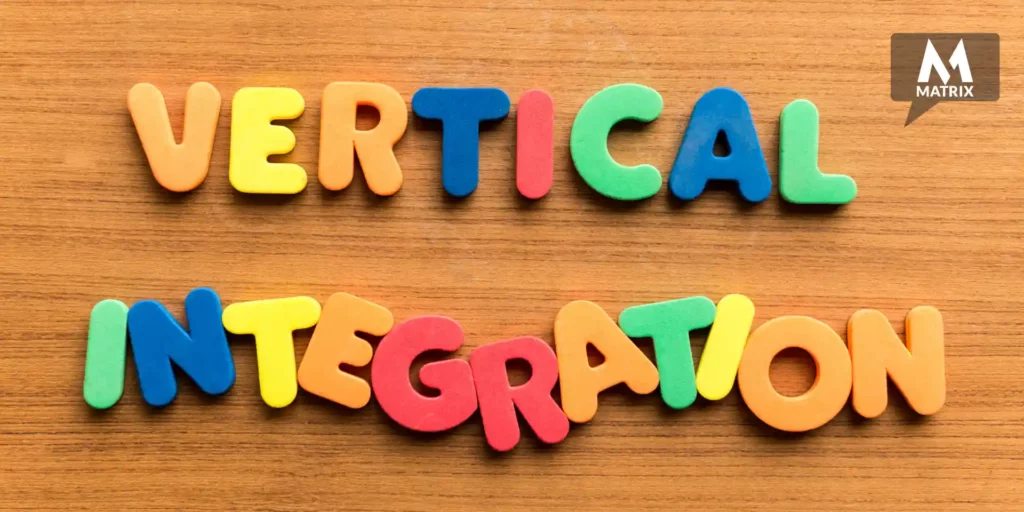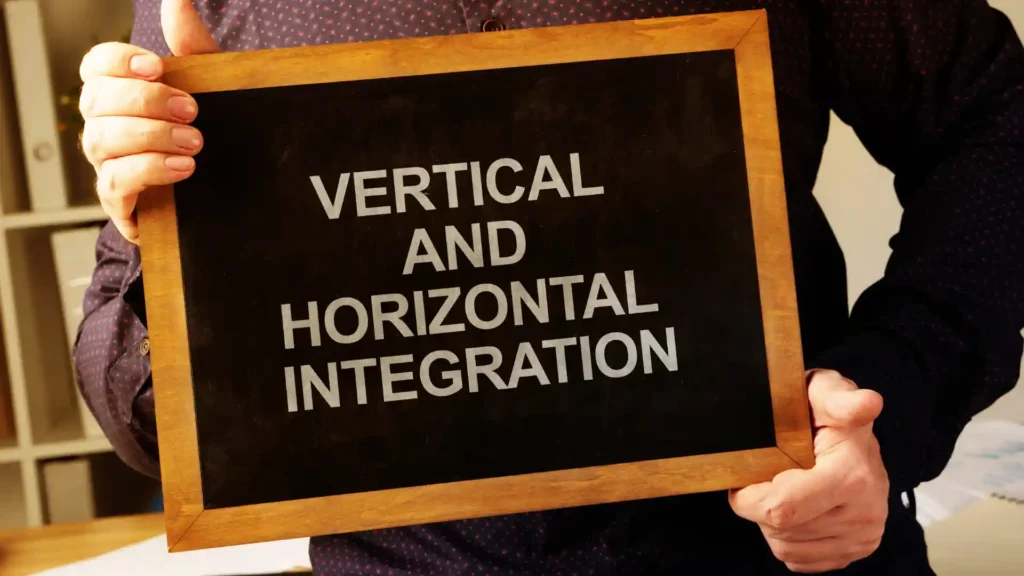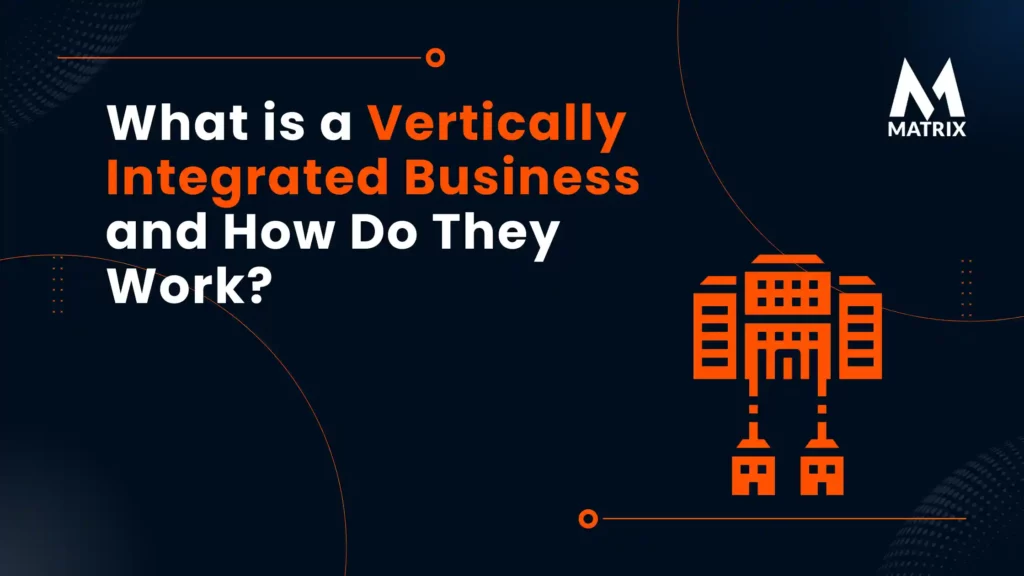What is a vertically integrated business, and how do they work?
Vertically integrated businesses are companies that control every aspect of their product’s creation and distribution.
From mining raw materials to selling the finished product, a vertically integrated company handles it all.
This gives them more control over the quality, pricing, and delivery. But it also comes with many risks, as any hiccup in the supply chain can cause major problems.
The 2020-21 COVID 19 pandemic has provided us all with a chance to reevaluate our working methods and find new ways of succeeding in challenging times.
Despite great challenges throughout this past year, the light at the end tunnel is fast approaching; as wheels start turning again we have an opportunity to ensure better growth for future resilience. We can do that by getting back on track now so let’s take some steps towards achieving business excellence!
But the US energy policy has stifled small businesses with inflation of $6.00 per gal for fuel.
The food and grocery industry was one of the few sectors to post growth in this economy, with online orders seeing an increase as well.
This may be partly because many vertically integrated companies have advantages when it comes time for adverse conditions; they also profit even during regular trading periods anyway due to their structures which make them better equipped than others (but don’t worry – there are plenty still waiting!).
What is vertical integration, and how does it work?

Vertical integration is a business model where a company owns or oversees every step in producing and distributing its products or services.
This includes everything from procuring the raw materials to shipping the finished product to consumers. Vertical integration allows companies to control costs, quality, and timelines, giving them a competitive advantage in the marketplace.
There are different types of vertical integration. In some cases, a company will own all or most of the stages of production. This is called “vertical ownership.” Alternatively, a company might cooperate with other businesses at different stages of production to improve efficiency. This is called “vertical coordination.”
Vertical integration can benefit companies because it allows them to streamline their operations and better control the quality and cost of their products. However, some risks are also associated with this type of business model.
For example, if a company becomes too vertically integrated, it might become difficult to change course if the market shifts or one part of the business fails. Additionally, if a company controls too many aspects of production, it might become difficult for new businesses to enter the market.
Vertical integration is a business model where a company controls every aspect of its product’s creation and distribution. This gives them more control over the quality, pricing, and delivery.
An example of a company that is vertically integrated is Target, which has its store brands and manufacturing plants. It creates, distributes, and sells its products—eliminating the need for outside entities such as manufacturers, transportation, or other logistical necessities.
There are a few key reasons why shareholders should care about vertically integrated businesses.
- vertical integration can help a company become more efficient and control costs.
- it can help a company expand into new markets and build a stronger brand.
- it can lead to greater efficiency and cost savings. Fourth, it can help a company respond to changes in the marketplace.
However, there are also some risks associated with vertical integration. So be sure to do a gap analysis first.
What is horizontal integration?
Horizontal integration is a business model where a company merges or allies with other companies at the same production stage.
This type of integration can improve efficiency and give companies a competitive advantage. Different types of horizontal integration exist, including mergers, acquisitions, and joint ventures.
Horizontal integration vs. vertical integration

Vertical integration vs horizontal integration are two different types of business models. Vertical integration is where a company owns or oversees every step in producing and distributing its products. A horizontal integration company is where a company merges or allies with other companies at the same stage of production.
There are benefits and risks to both types of integration.
Vertical integration can help a company become more efficient and control costs. It can also help a company expand into new markets and build a stronger brand. However, vertical integration can also lead to greater efficiency and cost savings.
If a company becomes too vertically integrated, it might become difficult to change course if the market shifts or one part of the business fails. Additionally, if a company controls too many aspects of production, it might become difficult for new businesses to enter the market.
Horizontal integration can help a company become more efficient and give them a competitive advantage. It can also help them expand into new markets. However, there are also some risks associated with horizontal integration.
For example, it might become less efficient if a company merges or allies with too many companies. Additionally, if a company merges or allies with a company in financial trouble, it might also be dragged down.
Which type of integration is right for your company? If you want to expand into new markets and gain a competitive advantage, horizontal integration might be the better option.
The most common type of vertical integration is backward vertical integration, where a company acquires or builds its suppliers.
For example, a clothing manufacturer may buy a fabric mill to produce their fabric instead of purchasing it from an outside supplier. Backward vertical integration can be a very effective way to increase efficiency and control costs.
Another type of vertical integration is forward vertical integration, where a company expands into new stages of the product cycle. For example, a car manufacturer may open its dealership chain so it can sell its cars directly to consumers. Forward vertical integration can be a great way to expand into new markets and build a stronger brand.
There are pros and cons to vertical integration. Plus, it can lead to greater efficiency and cost savings. But on the downside, it can be very risky as any problem in the supply chain can cause major disruptions. So, it’s important to carefully consider whether or not vertical integration is right for your
Do you want to know what vertical integration is?
An example of a company that is vertically integrated is Target
Vertical integration is a business model where a company controls every aspect of its product’s creation and distribution. This gives them more control over the quality, pricing, and delivery.
The CEO of Target is facing a number of major problems.
- First, the company has struggled to compete with Amazon and other online retailers.
- Second, Target has been dealing with a series of data breaches that have stolen millions of customer credit card numbers.
- Third, the company has been criticized for its decision to open its stores on Thanksgiving Day, resulting in protests from employees and shoppers.
Target’s problems underscore all retailers’ challenges in online shopping and data security.
The retail industry is in the midst of a major transformation, and it’s unclear how many retailers will survive. Most retailers struggle to keep up with Amazon, and many deals with data breaches and customer privacy concerns. But Target is not alone.
Target is trying to compete with Amazon by offering more products and services through its website. Target recently announced that it would be partnering with Google to offer same-day delivery in select markets. This directly responds to Amazon’s Prime Now service, which offers two-hour delivery in select markets.
An example of a company that is vertically integrated is Target, which has its store brands and manufacturing plants. It creates, distributes, and sells its products—eliminating the need for outside entities such as manufacturers, transportation, or other logistical necessities.
Manufacturers can also integrate vertically. Many footwear and apparel companies have a flagship store that sells a wider range of their products than are available from outside retailers. Many also have outlet stores that sell last season’s products at a discount.
Why should shareholders care about vertically integrated businesses?

There are a few key reasons why shareholders should care about vertically integrated businesses. First, vertical integration can help a company become more efficient and control costs. Second, it can help a company expand into new markets and build a stronger brand. Third, it can lead to greater efficiency and cost savings. Fourth, it can help a company respond to changes in the marketplace.
However, there are also some risks associated with vertical integration. First, it can be risky, leading to a loss of flexibility and agility. Second, it can increase a company’s exposure to risk. Fourth, it can be difficult to reverse if things go wrong.
So, it’s important to carefully consider whether or not vertical integration is right for your company. If you do decide to integrate vertically, it’s important to have a plan in place to manage the risks.
The benefits of vertical integration

Vertical integration can help a company become more efficient and control costs. It can also help a company expand into new markets and build a stronger brand.
However, vertical integration can also lead to greater efficiency and cost savings. The Target vertical integration example shows a vertical integration strategy in action.
The risks of vertical integration
Vertical integration can lead to greater efficiency and cost savings, but it also has some associated risks.
If a company becomes too vertically integrated, it might become difficult to change course if the market shifts or one part of the business fails. Additionally, if a company controls too many aspects of production, it might become difficult for new businesses to enter the market.
Suppose a company merges or allies with too many companies. Additionally, if a company merges or allies with a company in financial trouble, it might also be dragged down.
So, vertical integration has both benefits and risks. It’s important to weigh them carefully before making a decision.
How to decide if vertical integration is right for your business
If you’re considering vertical integration for your business, remember a few things. Here are some tips on how to decide if vertical integration is right for you:
- Evaluate your goals and needs. What are you looking to achieve with vertical integration? How can it help you meet your goals?
- Consider the risks. What are the potential risks associated with vertical integration? How likely are they to happen?
- Weigh the pros and cons. Decide if the benefits of vertical integration outweigh the risks.
- Make a decision. Once you’ve evaluated all the factors, it’s time to decide. If you decide that vertical integration is right for your business, proceed with caution and be sure to monitor the situation closely.
Vertical integration can be a helpful tool for achieving specific goals. However, it’s important to consider the risks before making a decision.
If you do decide to go ahead with vertical integration, proceed with caution and be sure to monitor the situation closely.
How to implement vertical integration if you decide to go that route

Vertical integration can be difficult, but it can be very rewarding if done correctly. Here are a few tips on how to successfully integrate vertically:
- Plan out your strategy carefully.
- Make sure you have the resources to support a vertically integrated business.
- Communicate with your employees to ensure everyone is on board with the plan.
- Be prepared to make changes to your business as needed.
- Always keep your ultimate goal in mind and work towards it steadily.
With careful planning and execution, vertical integration can be a great way to improve your business. Keep these tips in mind, and you will be well on your way to success.
The future of the retail industry and what it means for vertically integrated businesses.
The retail industry is constantly changing, and vertical integration is becoming an increasingly important strategy for companies to adopt. Here are a few things to keep in mind about the future of retail and its impact on vertically integrated businesses:
- The rise of online shopping is changing the way people buy products.
- This creates new opportunities for companies that can ship products directly to consumers.
- Vertical integration can help businesses keep up with the pace of change in the retail industry.
- Companies that can adapt their business models to the changing landscape will be the most successful in the future.
- The future of retail is immensely exciting, and companies that are prepared for it will be able to reap the rewards.
The retail industry is constantly changing, and vertical integration is becoming an increasingly important strategy for companies to adopt.
Conclusion on vertically integrated business
The retail industry is in the midst of a major transformation, and it’s unclear how many retailers will survive. Target is trying to compete with Amazon by offering more products and services through its website.
Target recently announced that it would be partnering with Google to provide more than one million items on Google Express. This is just one example of how Target is trying to stay ahead of the curve and keep up with the changing retail landscape.
Vertical integration has become an important strategy for companies in the retail industry to adopt.
By integrating different aspects of their business, retailers can keep up with the pace of change and offer more products and services to their customers. The future of retail is immensely exciting, and companies that are prepared for it will be able to reap the rewards.
General FAQs about vertically integrated business
What is a vertically integrated business?
A vertically integrated business is a company that controls every aspect of its product’s creation and distribution. This includes the mining of raw materials to the sale of the finished product. By integrating different aspects of their business, retailers can keep up with the pace of change and offer more products and services to their customers.
What are the benefits of vertical integration?
Vertical integration can have several benefits for businesses, including Increased Efficiency: When a company is vertically integrated, it can streamline the production process and make it more efficient. This can result in savings for the business and improved quality control. With greater control over quality: By controlling every step of the production.
How can a company achieve vertical integration?
There are a few ways that a company can achieve vertical integration: (1) By acquiring other companies that are in different stages of the production process, (2) By setting up its manufacturing facilities, and (3) By controlling the distribution of its products, and (4) By owning the raw materials used to create its products.
What are the challenges of vertical integration?
Vertical integration can be challenging for businesses for a number of reasons, including Increased Costs: When a company integrates different aspects of its business, it can often lead to higher costs. This is because the company has to deal with multiple suppliers and may not be able to get the best prices for its products.
What are some examples of vertically integrated businesses?
Some examples of vertically integrated businesses include Walmart, Coca-Cola, and Apple. These companies control every step of the production process, from mining raw materials to selling the finished product. This allows them to streamline the production process and improve quality control.

